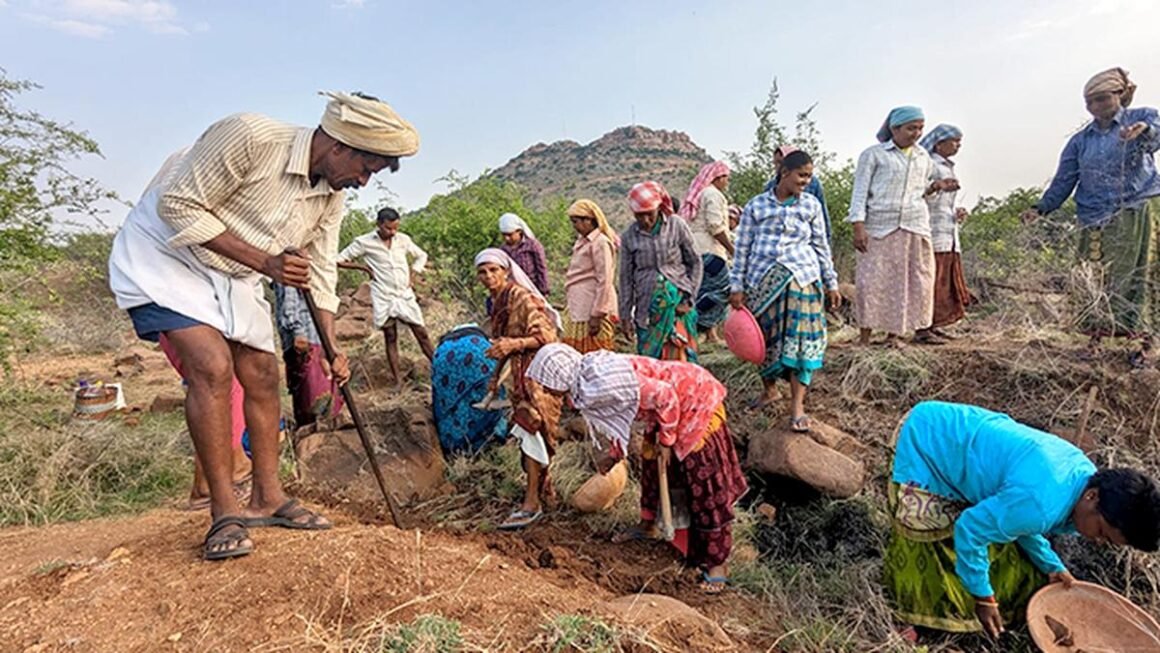
“This is not a quiet rise. It’s a grassroots revolution—led by locals, powered by policy, and built to last.”
The Quiet Powerhouses Behind India’s Growth
Walk into any village today, and you’ll notice something different. It’s not just the new solar panels or the digital kiosks—it’s the confidence. The quiet pride. In 2025, rural India isn’t waiting for change. It’s making it.
In Jharkhand, a woman who once stitched clothes by lantern light now runs a solar-powered tailoring unit with five others. In Gujarat, dairy farmers use AI to track milk yields and plan deliveries. In small towns across the country, young people are launching startups, running BPOs, and selling handmade products online. These aren’t isolated stories. They’re the pulse of a new India.
More than 1.2 crore jobs have emerged from the ground up. Women-led self-help groups now manage ₹18,000 crore in annual turnover. Rural e-commerce has crossed ₹6,000 crore. And digital skilling programs have reached deep into Tier 3 towns, giving young people the tools to build futures they once thought were out of reach.
The Policies That Made It Possible
Behind every thriving rural enterprise is a policy that didn’t just fund—it listened. These schemes didn’t arrive with fanfare. They arrived with purpose. And they’ve quietly reshaped the landscape.
| Scheme | Reach in 2025 | What Changed |
| PM Vishwakarma Yojana | 18 lakh artisans onboarded | ₹13,000+ crore disbursed; toolkits and training delivered |
| DAY-NRLM | 9 crore women mobilized | 80 lakh SHGs digitized; thousands of SHG-run businesses |
| Startup India Rural Track | 6,200 rural startups funded | 40% women-led; agri-tech and tourism ventures thriving |
| PMEGP 2.0 | ₹6,500 crore in loans | 70% in aspirational districts; 1.1 lakh micro-enterprises created |
| Digital India Rural Skilling | 65% youth trained | 22 lakh certified; 8 lakh placed in remote jobs |
| Mission Antyodaya | 2.5 lakh gram panchayats covered | ₹9,000 crore in infrastructure upgrades; digital mapping complete |
Real People, Real Progress
Kamla Devi from Rajasthan used to earn ₹3,000 a month. Today, she runs a millet processing unit with 12 women and supplies to three states. Rekha Kumari from Bihar became her village’s first digital kiosk operator. Her children now call her “Bank Wali Mummy.” And in Madhya Pradesh, Ramesh Patel built a cold storage unit using a government grant and YouTube tutorials. His tomatoes no longer rot before reaching the market.
The Challenges That Still Remain
Progress hasn’t come easy. Rural entrepreneurs still face hurdles—some old, some new. But what’s remarkable is how they’re responding.
| Challenge | Impact | How They’re Adapting |
| Lack of capital | Slows growth | SHG pooling, CSR-backed microfunds |
| Skilling gaps | Youth dropout | Mobile vans, peer-led training |
| Market barriers | Products stuck locally | ONDC onboarding, NGO logistics |
| Tech divide | Limits scale | WhatsApp-based operations |
| Policy overlap | Confusion | District-level convergence cells |
| Gender bias | Women-led ventures underfunded | Drone Didi, SHG-first funding |
| Infrastructure gaps | Power, transport bottlenecks | Solar grids, CSR-built cold chains |
The Numbers That Speak for Themselves
In July 2025, India’s rural unemployment rate dropped to 4.4%. Youth unemployment declined to 13%. These aren’t just statistics—they’re signs of something working.
Ramesh, 22, from Jharkhand, trained under DDU-GKY and now earns ₹18,000 a month as a solar technician. Kavita, 34, from Madhya Pradesh, received a drone under Drone Didi and now earns ₹3,000–₹5,000 per week offering crop spraying services. Aarti, 29, from Karnataka, used a Mudra loan to start a millet snacks business that now employs five women and supplies to two cities.
Even policymakers are paying attention. “CSC represents a radical idea—bridging the urban-rural divide through technology,” said Shri Atul Kumar Tiwari. “It is heartening to see CSR evolve from a statutory requirement into a strategic driver of inclusive progress,” added Sanjay Kumar Rakesh.
When CSR Becomes Co-Creation
CSR in 2025 isn’t just about writing cheques. It’s about building futures. Companies are setting up incubators, partnering with NGOs, and helping village products reach big cities.
In Odisha, youth trained in solar panel installation—80% found jobs within months. In Gujarat, CSR-funded cold storage units helped reduce post-harvest losses by 40%. These aren’t pilot projects. They’re proof that when companies invest in people, change follows.
From Survival to Strategy
India’s villages aren’t asking for help. They’re showing what’s possible. From drone-led farming to artisan exports, rural entrepreneurs are proving that big change can start in small places.
And with smart policies, bold CSR, and innovations like agri-tech accelerators and SHG-led drone services, they’re not just catching up. They’re leading the way.
This isn’t rural upliftment. It’s rural leadership—built by locals, backed by data, and ready to scale.
FOR MORE BLOGS – beyondthepunchlines.com

 Add to favorites
Add to favorites







